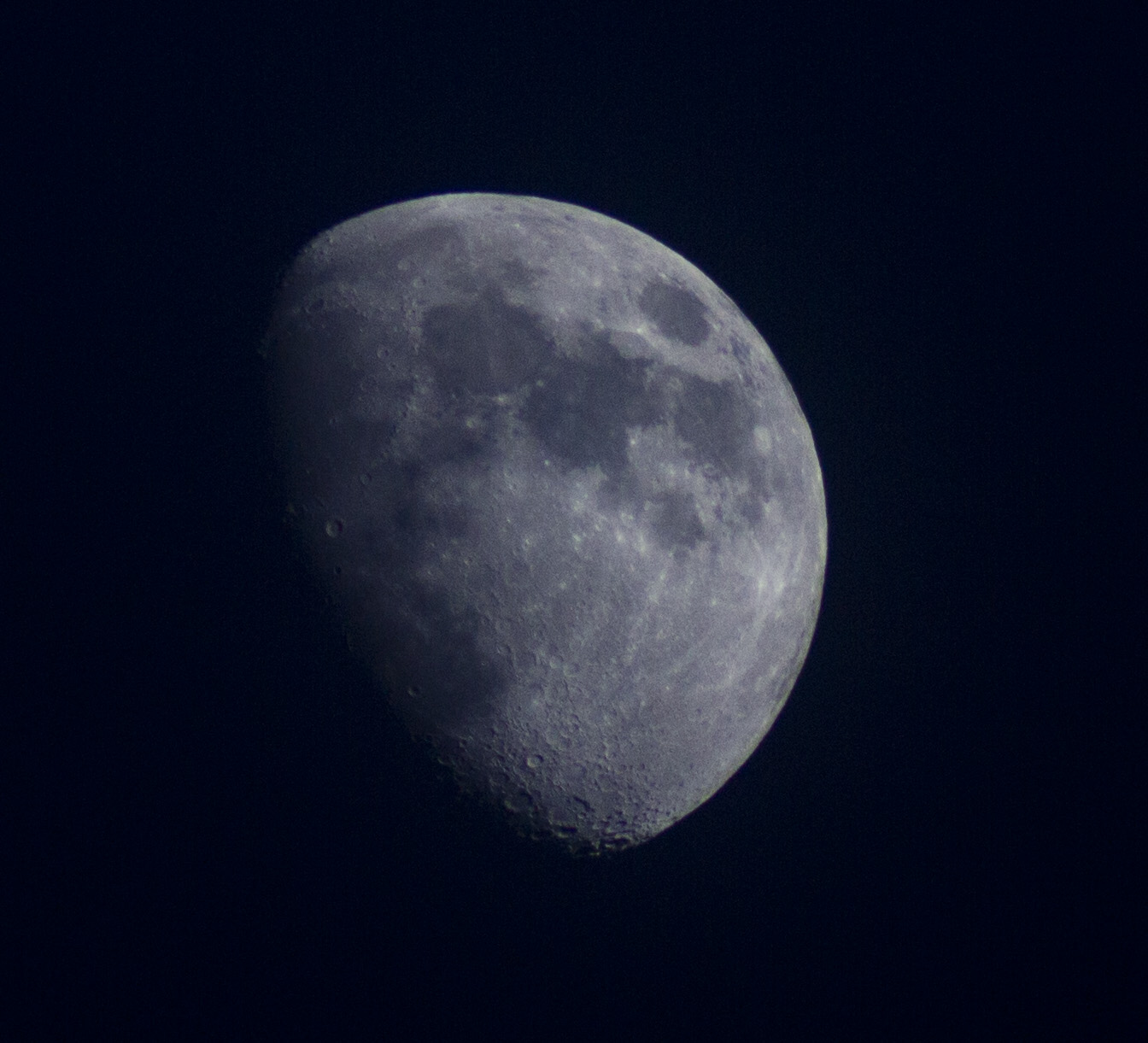The Spring has been a bit slower than I would have liked in terms of astrophotography. I have seen a lot of fantastically clear evenings, but have been plagued by a lack of time and a few technical issues that have kept me from getting the many hours of practice needed to become competent. I did manage to purchase an inexpensive adapter to use my camera with my telescope, giving me a ton of new options for photography, as well as a ton of new challenges.
The two main problems I had, and need to address in the future, are focus and stability.
The first problem I noticed was the stability issue of added weight on the tripod. I always pack a lighter tripod to use for photography because it’s easier to carry and the camera doesn’t weigh much. But a telescope is heavy; Even my small 4 inch refractor was causing imbalance on the tripod, especially with the camera attached. While being zoomed in so far, even a small jostle was enough to send the target out of view until it came to a stable equilibrium point. The tripod also wasn’t made for use with a telescope, so I couldn’t use any fine adjustment knobs, instead relying on my eye to point the scope. I liken it to aiming a cannon at a squirrel.
So I set my sights on the Moon. It was the only object large and bright enough to get a good image of while maintaining the focus. If I ever want to photograph stars, stability will be a huge issue because even a small jostle on a longer exposure will mess up the final image. Though for the Moon, my persistence and practice with exposure and ISO paid off, and I was really happy with the final image.

The other major issue was focus. Because my telescope is small, it doesn’t have a fine adjustment for the focus. Not that a small telescope really needs it, but when observing, the human eye can make up the difference if the focus is off a bit. When taking a photograph, it has to be PERFECT. Even being off by a tiny bit can give a final image that is missing fine details. I ended up taking 20-30 images of the Moon, after adjusting the focus back and forth a few times. I ended up with a lot of images in focus, which was great, but I’m cautious as it could be tougher when imaging stars.
As for the general stuff, the pic above was shot in manual mode, with ISO 100 and an exposure of 1/1600. I kept the ISO low to minimize the noise since I would have to crop the image in post. When I got it to post, I made a few simple adjustments. I turned the contrast way up, which really emphasized the surface features. I upped the brightness and the exposure just a bit, and lowered the colour temperature down to 2300, before cropping to what you see here.
My next step is to take the 20-30 images I took, and stack the best ones to see if I can create a bit more sharpness in the features and reduce noise even more. Still, no matter how much you do in post, if the atmosphere isn’t kind to you, it’s hard to end up with a good image.
Ultimately the problems I can control are focus and stability. Problems that can really only be solved by getting a new tripod and a new telescope. I will likely purchase a new tripod before the eclipse in 2017, since the stability will be that much more important.
And of course, with the eclipse, I only get one chance to do it right….
